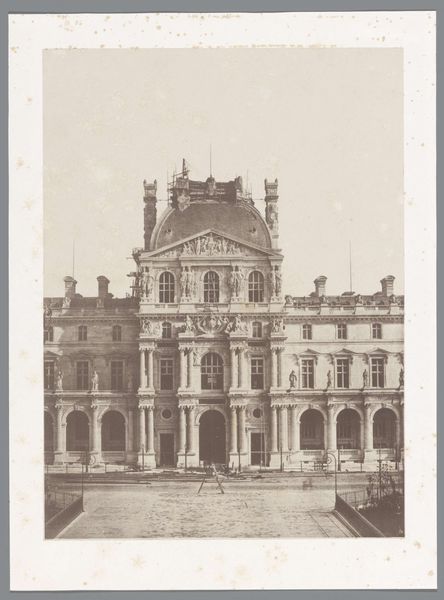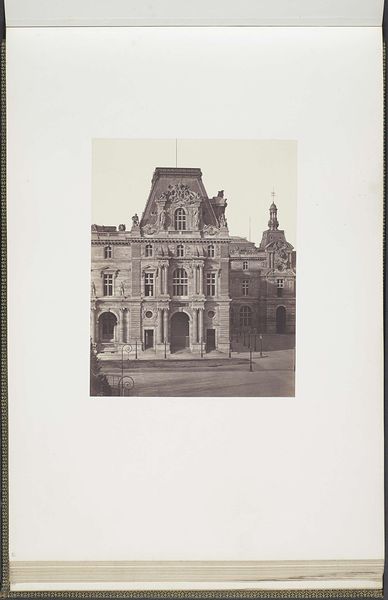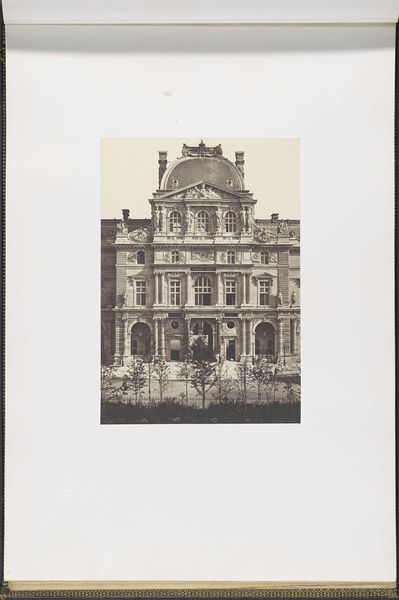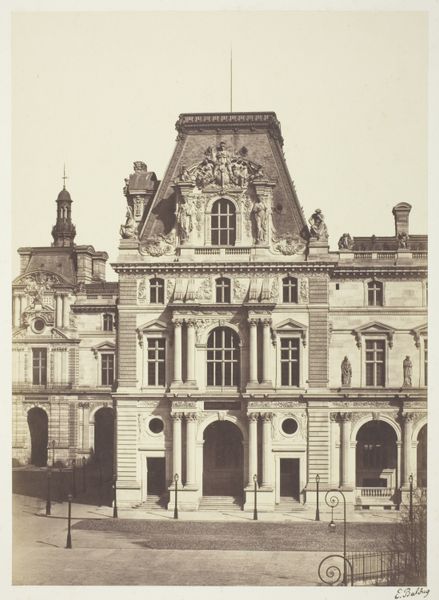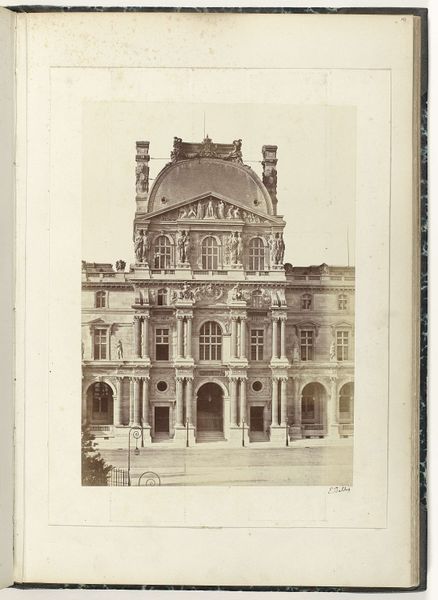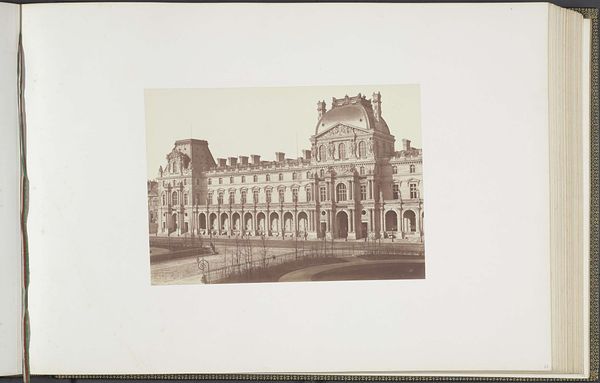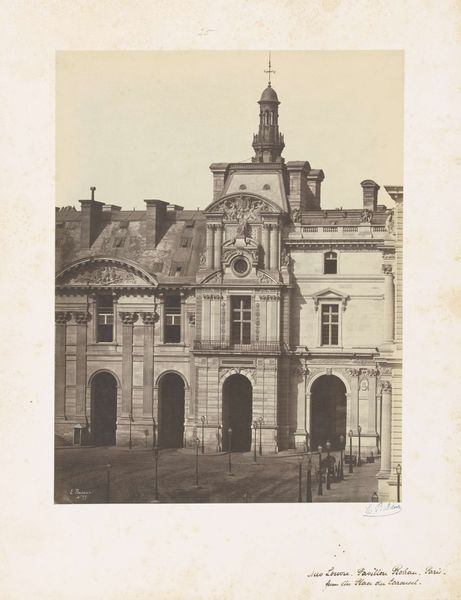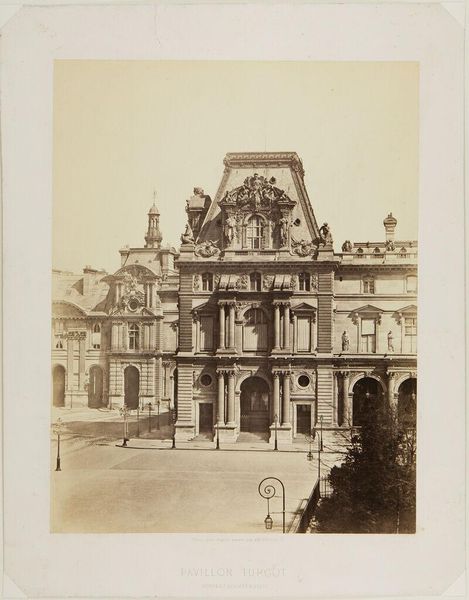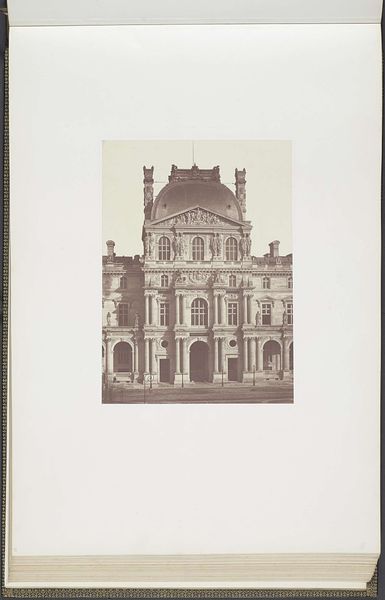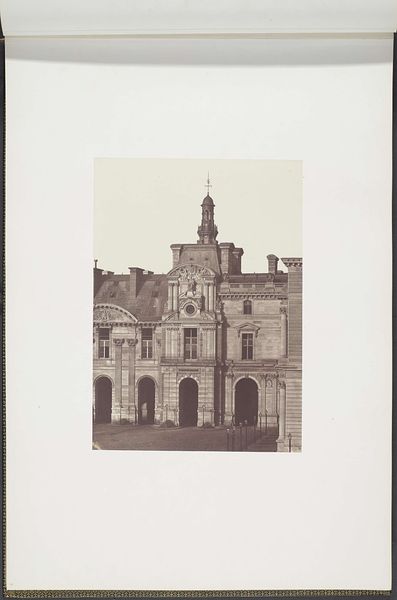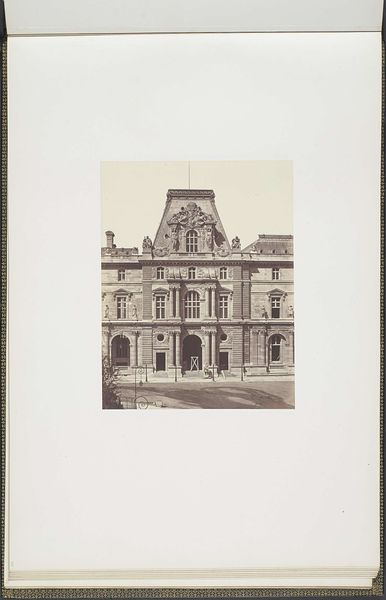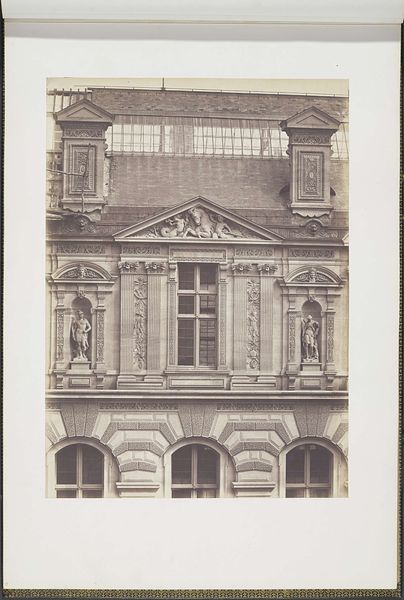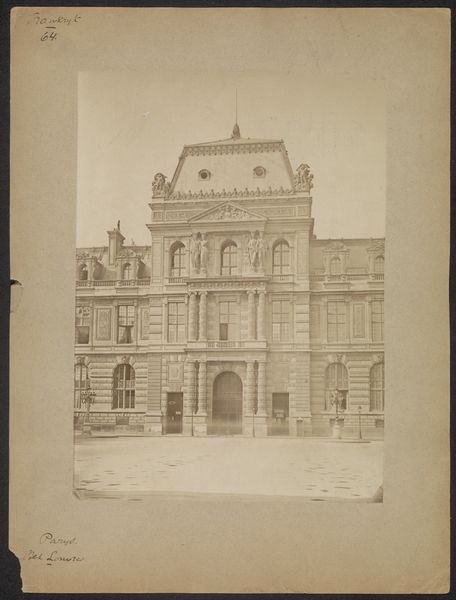
Dimensions: height 265 mm, width 198 mm
Copyright: Rijks Museum: Open Domain
Curator: Before us is Édouard Baldus’s circa 1857 albumen print, "Paviljoen Turgot van het Louvre," currently held in the Rijksmuseum collection. Editor: The image has a striking stillness to it. The way the light falls emphasizes the grand, yet almost melancholic, facade. It makes me think of the weight of history embedded in the building's very stones. Curator: Baldus, as a photographer, was deeply engaged with the material transformations of Paris under Napoleon III. This particular albumen print showcases the Pavillon Turgot of the Louvre amidst significant reconstruction. What interests me is Baldus’s use of the albumen process to create this highly detailed image on paper—its fragility belies the monumental scale of the building. The paving stones too show a trace of craft. Editor: The architecture itself—those sculpted figures above the windows, the rhythm of the columns— speaks volumes about power and prestige, harking back to classical ideals of beauty and order. Considering the tumultuous events of the time, I find myself looking for the underlying meaning, the aspirations embodied in these enduring forms. Does this image also try to convey aspirations for order amid disruption? Curator: The symbolism of permanence is intriguing given the era. I think there's something profound in his use of the relatively new medium of photography to document the "old," effectively making it "new" again, a carefully mediated consumption of Paris and its identity. The architecture, through Baldus’s careful craft, becomes a commodity itself. Editor: Perhaps. But Baldus also manages to convey a sense of timelessness, an idealized vision of Parisian grandeur that transcends the immediate political and social struggles. Those arches evoke a certain visual poetry that speaks to the collective memory. Curator: In that, maybe we can find agreement. He transforms the stone and labor into not just an image, but an icon. He captures both the weight and the light of Parisian architecture, making it not only a physical space but a cultural artifact. Editor: Indeed, a lasting testament to the city's symbolic power. Curator: A very well-placed observation to close our analysis. Editor: Yes, thanks.
Comments
No comments
Be the first to comment and join the conversation on the ultimate creative platform.
